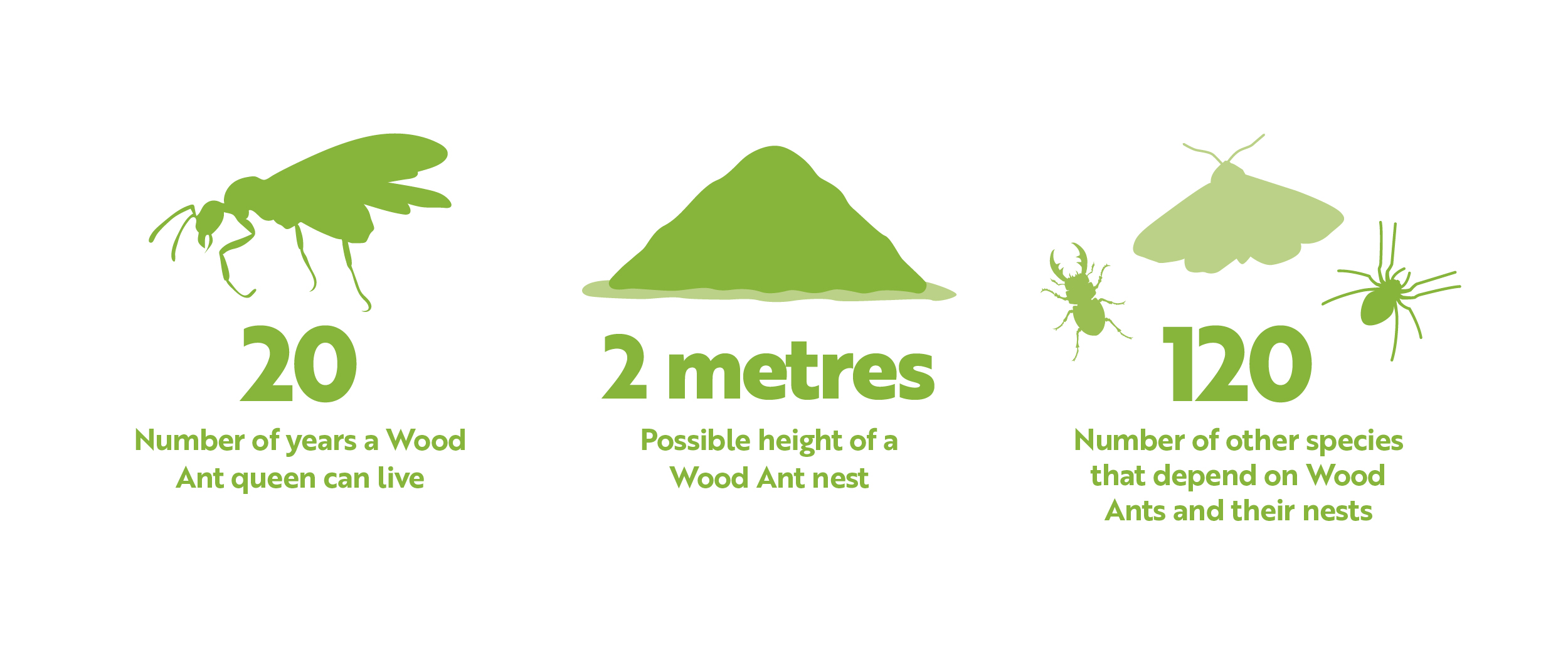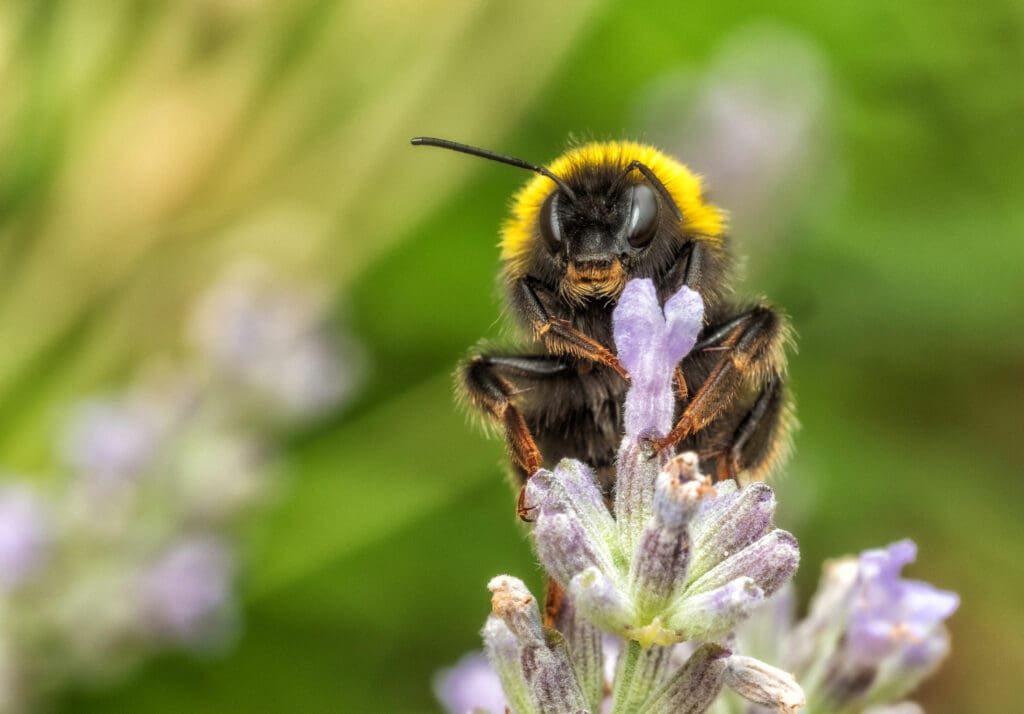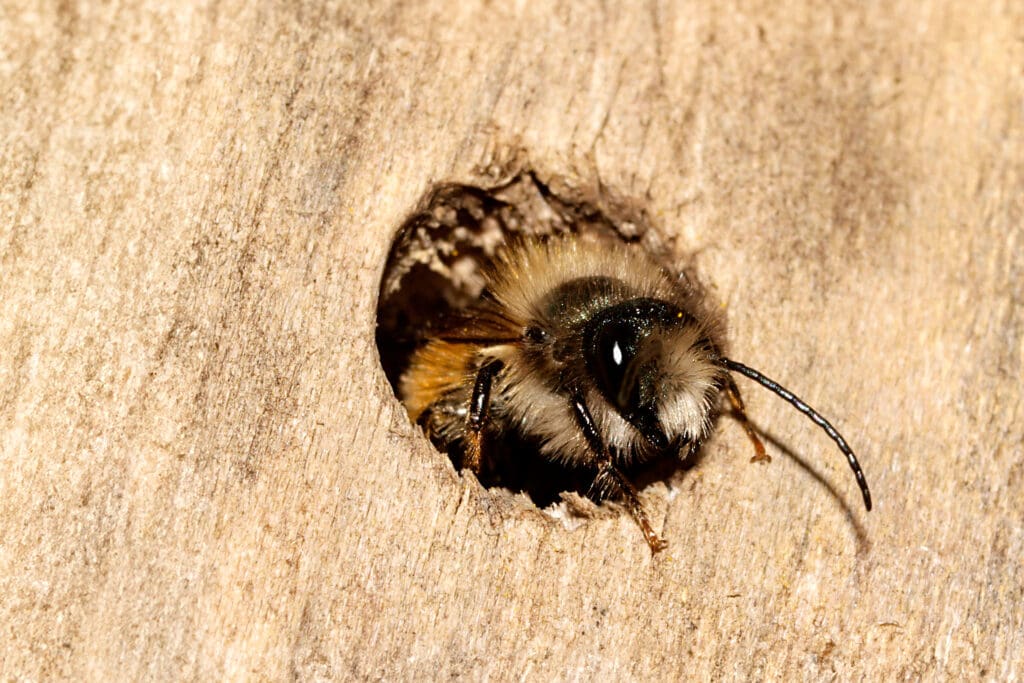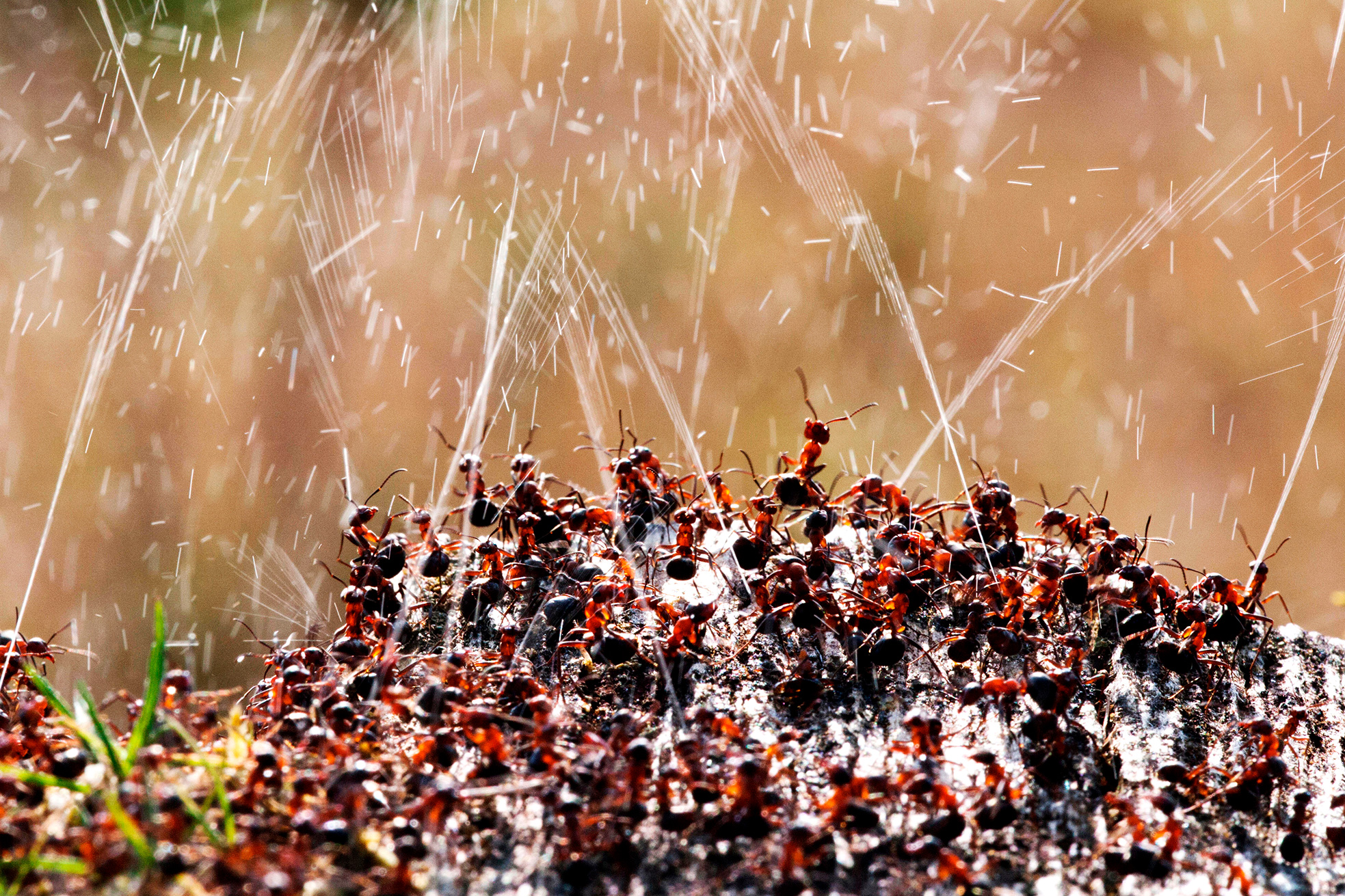In the UK we have three true wood ant species – Southern, Northern and Scottish, all of which are very similar in appearance. The Southern and Northern Wood Ant are the most common.
All life in the nest revolves around the queen, who can live for as long as 20 years. In contrast, the over-wintering workers live for nearly a year and the summer workers live for only around two months. Other than reproduction, males are pretty useless and they perish after mating, living for only a few short weeks.
In the woodlands where these ants occur, you’ll be hard-pressed to miss them and their impressive nest mounds, which can be as much as 2m tall. This nest mound, a marvel of arthropod architecture, is shielded by a thatch of pine needles and other plant material. The untidy thatch belies the complexity of the nest beneath, with its chambers for the queen and nurseries for the brood, not to mention food stores and rubbish tips.
The popular view of ant societies is a group inhabiting a single nest ruled over by a queen, but the reality is much more complex. Wood ant colonies can have a single queen or lots of queens, and the colony can inhabit a single nest mound or multiple connected nest mounds that form by ‘budding’. In any given area there might be a mix of social structures, from one colony occupying one nest with a single queen to super-colonies occupying lots of separate but connected nests with hundreds of queens.
As fierce and domineering as wood ants are, their nests are exploited by many other animals: 52 beetle species, 28 mite species, 15 species of other ants and wasps, 10 fly species, eight true bugs, six spiders and even a moth are all dependant on these ants to some extent. Some live in close proximity to the nest, others live in the nest but are not tolerated if discovered, and others fool the ants into accepting them.

You might also like

Breeding like flies?

Insects that help us



